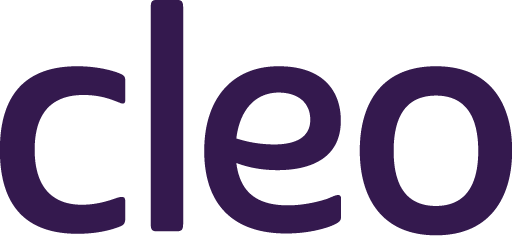Employers who want to attract and keep the best talent understand the importance of offering benefits their employees most want, need, and will actually use. Direct feedback and input from a valued employee like yourself should be welcomed and useful when it comes time to evaluate and make changes to their benefits package.
Your guide to making the case for a holistic family benefit
It can be intimidating to ask for what you need, both in life in general but especially at work. We get it. But as the saying goes: If you don’t ask, the answer will always be no.
The fact is that your HR team might not even be aware of all of the benefits that Cleo can bring employees, but also your employer themselves. Or, even if they’re aware of the benefit, often your executive team wants to ensure that employees will actually use the benefit once they bring it on board. Direct requests from employees are incredibly valuable in this process.
1. Get the ball rolling
Overcoming inertia is often the hardest part. So start small, with a quick, friendly note to your Benefits or HR team with a simple inquiry: “Are there any forums within [your company] to provide feedback or input on our available benefits? Do we have any employee resource groups or working committees I can connect with to discuss some ideas?”
2. Gather allies
On your own, you can make a strong case for family benefits, but you’ll make it even stronger when you’re backed by a chorus. A Parent ERG (see below for definition!) can be a great vehicle for building support behind and elevating the need for family benefits. Beyond other current and future parents and caregivers, those committed to diversity, equity and inclusion can also be great points of connection. Supporting working caregivers supports their goals as well.
What’s an ERG? Employee Resource Groups are voluntary, employee-led groups whose aim is to foster a diverse, inclusive workplace aligned with your company goals and values. They are typically organized around a shared characteristic or affinity such as gender, ethnicity, or being a parent or caregiver. They may go by different names, such as Employee Networks or Affinity Groups, and vary in the degree to which they’re operationalized. According to TopMBA, ERGs are found in 90% of Fortune 500 companies, so there’s a good chance that you already have a forum at your disposal.
3. Know the facts
Whether you’re collaborating with others to present a formal case, or having a more informal and direct conversation with someone in HR, you’ll want to have some data and talking points prepared.
The good news is a lot of the homework has already been done. The following outlines key talking points with supporting data ready to tailor to your needs.
Working families have changed, while benefits haven’t
Women are waiting longer to have children, families are pursuing new and different paths to parenthood, and the population is aging and requiring more caregivers by the day. The traditional benefits paradigm simply hasn’t kept up; it’s a relic of mid-century design, built around the needs of a workforce much different than today’s.
The costs of not keeping up with caregiving needs will only go up
- 1 in 5 dollars spent on healthcare goes toward services for birthing parents and children.
- Roughly 1/5 of Americans provide unpaid care to an adult for an average of 24 hours/week.
- A holistic family benefit that improves caregiver health, and engagement with work is a path to bringing increased health care and attrition costs down.
A holistic family benefit supports diversity and inclusion
LGBTQ+, divorced, and single parents all feel less supported at work than their partnered, heterosexual peers.1 Every family is unique. Employers able to provide a flexible, holistic solution to supporting working families can attract the best talent while keeping up with their varied and evolving needs.
Yesterday’s benefits don’t meet today’s caregiving needs. The inclusion of caregiving benefits, whether it’s child care or elder care assistance, has increased by 177% in the last three years. Now is the time to join top employers, and invest in working families.
4. Personalize your pitch
Draw on your own and others’ lived experiences balancing career and family. What has left you floundering, stretched too thin, or simply overwhelmed? Was it a difficult path to parenthood? Did you have no idea how to return to work with a baby keeping you up half the night? Have you struggled with consistent and reliable child care? Are you stressed about helping to care for your aging parents while also maintaining a full-time job?
We’ve been there, and chances are most of your colleagues have, too. Data may make your case, but when you speak from personal experience, it makes it real. A family benefit is the added layer of support we all need to get through these moments healthier, and in one piece, to be more successful at home, and at work.
We’re here for you, and we’ll be rooting for you.
Cleo is offered to working parents and caregivers (and their partners) through employers for free.
We support everyone from family planning through birthing or adoption, to the parenting of children up to age 18, through to adult caregiving, to caring for yourself. To find out if you’re eligible, check with your employer.
Learn more about how we’re helping working families thrive.
Just like our neighbors, you feel like our chosen family. The support of Cleo and you as our Guide has been amazing and you know I just love all the tips and content. My partner and I are literally in tears. The best gift!
Parent & Cleo Member
